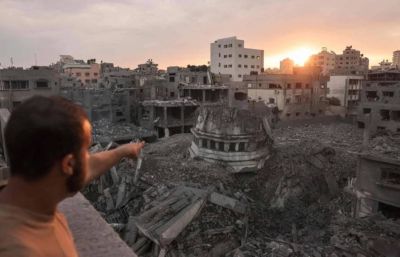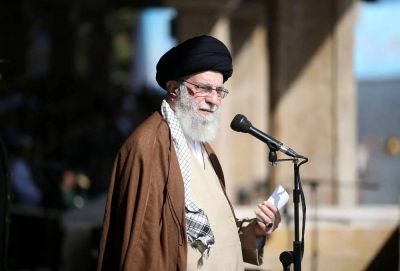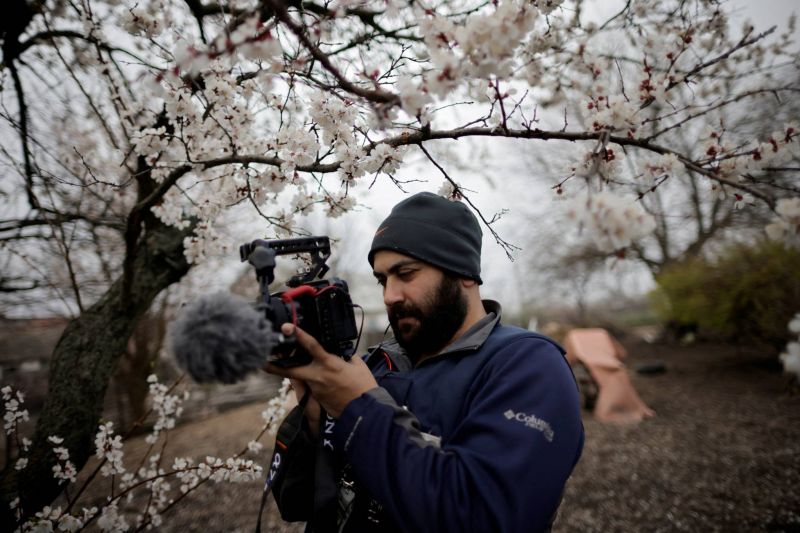
Reuters journalist Issam Abdallah reporting from Zaporijjia, Ukraine, April 17, 2022. (Credit: File photo Reuters/Ueslei Marcelino)
BEIRUT — The Israeli army claimed to have used tanks and artillery fire to prevent an infiltration from Lebanon at around the same time as the death of Issam Abdallah, a Reuters video journalist killed on Friday evening at the age of 37 in a bombing raid that also wounded six AFP, Reuters and Al Jazeera journalists.
In an article published by Reuters on Sunday, the Israeli army added that its "actions were in response to Hezbollah fire along the Israeli-Lebanese border" and that "the incident was under investigation."
Lebanese authorities accused Israel on Saturday of being responsible for the strike in southern Lebanon, to which the Israeli army initially responded by saying it was "very sorry" about the death. It also said that it was carrying out "verifications".
Anti-tank missile
The Israeli army told Reuters that it "suspected an infiltration into Israeli territory immediately after an anti-tank missile was fired," and that troops then used tanks and artillery fire to prevent the infiltration.
"A few hours later, it was reported that journalists had been injured in the area during the incident," the army added.
Six journalists were wounded in the bombardment while covering the conflict from the Lebanese border village of Alma al-Chaab: two from AFP, Dylan Collins and Christina Assi, who was seriously injured; two from Reuters, Thaer Al-Sudani and Maher Nazeh; and two from Al-Jazeera, Carmen Joukhadar and Elie Brakhya.
Since the start of the war between Israel and Gaza, triggered on October 7 by an unprecedented attack by Hamas, southern Lebanon has been the scene of firefights between Hezbollah and the Israeli army, and of attempts to infiltrate Israel from Lebanon.
The French Foreign Ministry sent its "condolences and thoughts to the loved ones, families and colleagues" of Issam Abdallah, adding that it wished "a speedy recovery to his injured colleagues." Issam Abdallah's funeral took place on Saturday in Khiam, southern Lebanon.
Two strikes?
Footage shot by American AFP video journalist Dylan Collins, who was wounded by shrapnel, appears to show a flash of light coming from the Israeli position just before it hit the journalists. "We were filming the smoke from Israeli artillery fire aimed at a distant hill opposite us. We were on open ground, wearing our press vests and helmets," he said. "There was no military activity or artillery fire in the immediate vicinity" of the journalists, he added. "Suddenly we heard small arms fire coming from another direction, near the border. When we turned our cameras in that direction, we were hit by what appeared to be rocket fire from the Israeli side," continued the journalist. "I saw my colleague Christina Assi on the ground with serious leg injuries. As I tried to put a tourniquet on her, we were hit again, directly, from the same spot," he said.
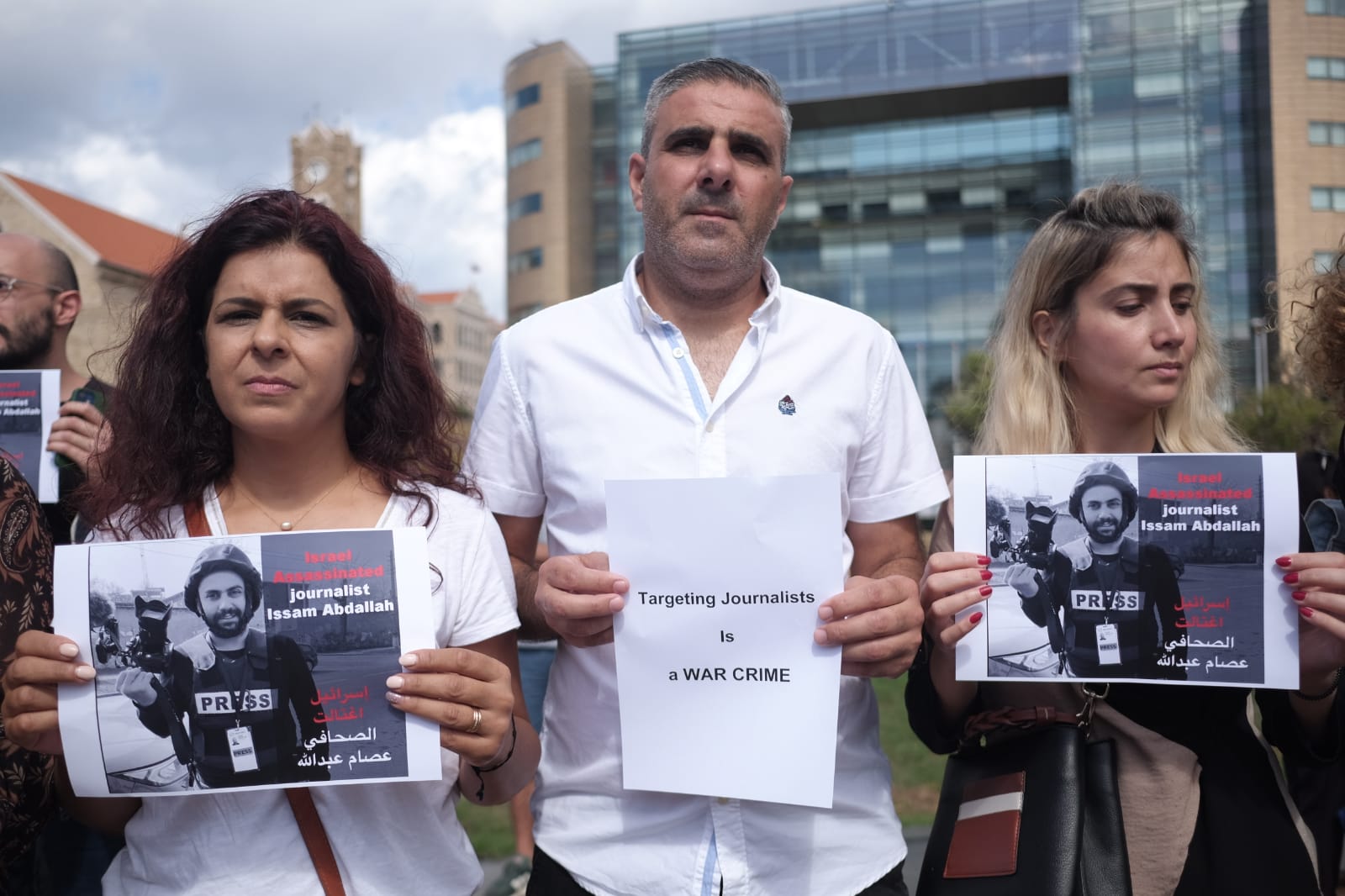 People protesting in Beirut on Sunday against the killing of Reuters videojournalist Issam Abdallah in South Lebanon on Friday. (Credit: João Sousa)
People protesting in Beirut on Sunday against the killing of Reuters videojournalist Issam Abdallah in South Lebanon on Friday. (Credit: João Sousa)
AFP called on Israel and Lebanon on Saturday to conduct "a thorough investigation" into the reasons for the attack. "It is crucial that every effort be made to determine how a group of journalists clearly identified as such and duly accredited could have been targeted in this way," AFP CEO Fabrice Fries said, quoted in a statement.
"Israel targeted us directly," said Carmen Joukhadar, a correspondent for the Qatari channel Al Jazeera, who is hospitalized in Beirut. "At 6 o'clock, the first strike took place, I ran to our car, then I thought I shouldn't stay near it, so I ran to get away from it, and the second strike happened," said the Lebanese journalist. Al Jazeera accused Israel of firing a rocket from an Apache helicopter.
The United Nations Interim Force in Lebanon (UNIFIL) said on Saturday that Israel had struck a position "around 2.5 km from the village of Alma el-Chaab at around 5:20 p.m. on Friday, followed by exchanges of fire and explosions."
"At this stage, we cannot say with certainty how the group of journalists was hit," its statement read.
Protest in downtown Beirut
Sunday, about 100 people have gathered in Downtown Beirut to protest against the killing of Issam Abdallah. The vigil has been organized by members of the press in Lebanon to demand an international investigation.
Reporting direct from the vigil was L’Orient Le Jour’s Olivia Le Poidevin.
“I knew Issam from day one of the thawra [revolution]. He was the first photographer who entered every dangerous place just to take photos and to communicate what was happening to the world,” said political and social activist Roy Boukhary.
Roy held a sign with the last photo taken of Issam Abdallah, in South Lebanon, wearing a press vest moments before he was killed. Next to it there is a photo of Shireen Abu Akleh, who was shot dead while covering an Israeli armed raid in the West Bank city of Jenin.
“A week before Issam died he shared a photo on his Instagram of Shireen. As if it was a message that he will see her,” said Boulhary.
“What happened on Friday was a huge message from Israel to the press to stay away or we will come and kill you.”
A report by the Committee to Protect Journalists found that no one has been charged or held accountable for the death of at least 20 journalists killed by Israeli gunfire over the past two decades.
“He is a brave photographer. One of the bravest I ever met,” added Boukhary.
For years, Issam Abdallah covered major news events from the Middle East and beyond, including the August 4th blast and the war in Ukraine.
“After the August 4th blast, Issam was taking photos and he was also helping other people on the ground at the same time. It was dangerous to enter the building and he wasn’t afraid. He worked from his heart. Because he loved his job. He gave his best to send the right picture at the right time at the right place.”
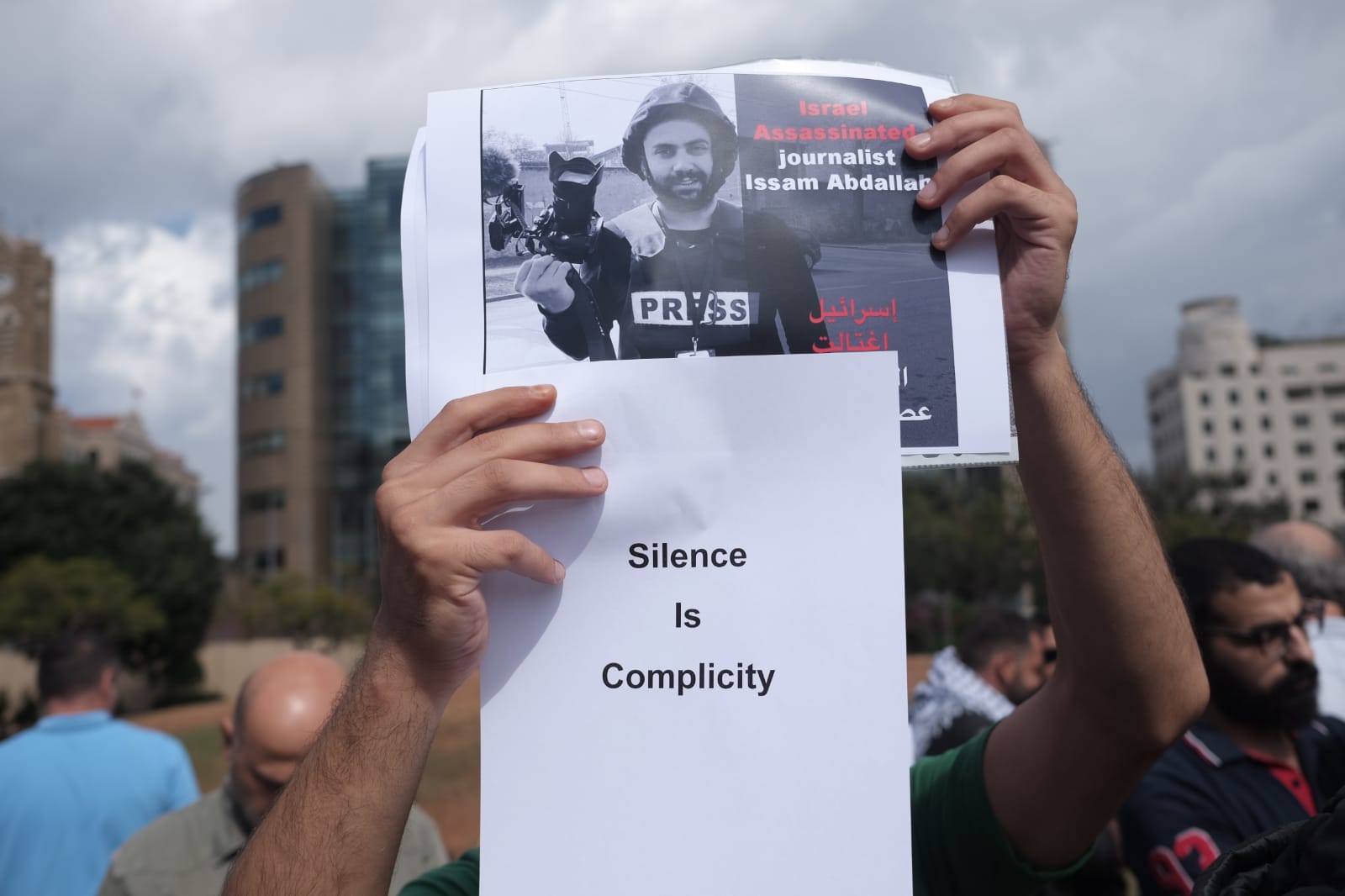 People protesting in Beirut on Sunday against the killing of Reuters videojournalist Issam Abdallah in South Lebanon on Friday. (Credit: João Sousa)
People protesting in Beirut on Sunday against the killing of Reuters videojournalist Issam Abdallah in South Lebanon on Friday. (Credit: João Sousa)
Florient Zwein — freelance photographer and close friend of AFP photojournalist Christina Assi, who was seriously injured in the bombardment that killed Issam Abdallah said: "I truly believe they were targeted. this was not an accident. It was a crime. They literally killed Issam. I don’t believe there will be any justice. Look at what happened to Shireen Abu Akleh. Regarding Christina Assi, she has had 10 hours of surgery, she has lost a lot of blood. She needs more blood for potentially further surgeries to come."
